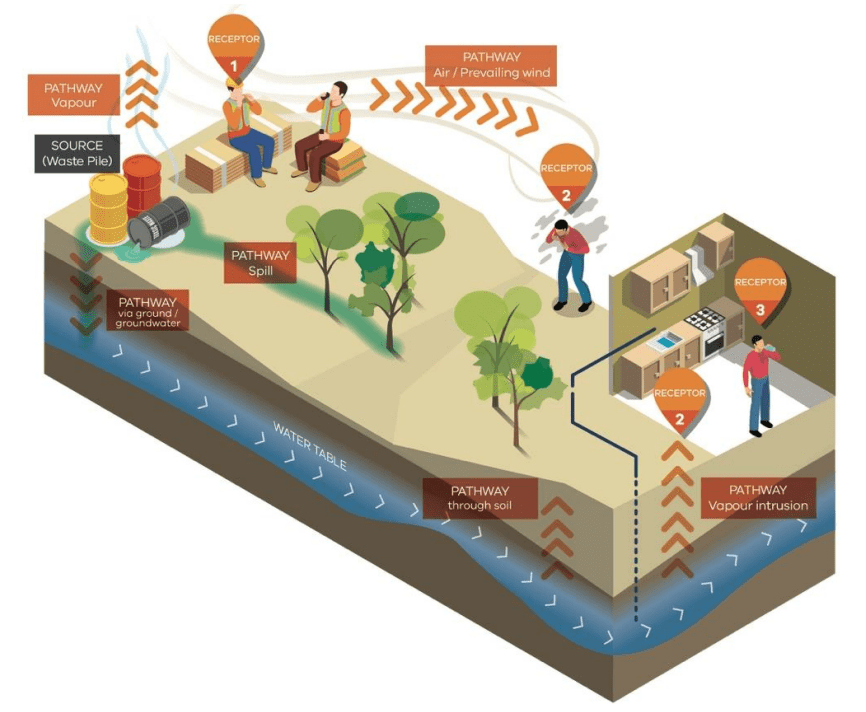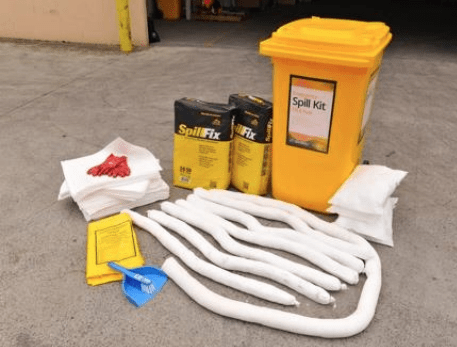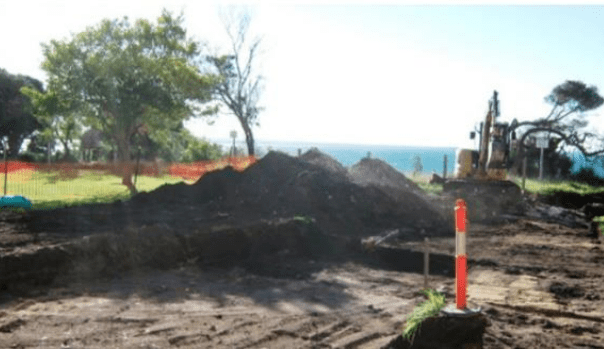Pollution is any type of emission, discharge, deposit, disturbance or escape of solid, liquid or gas. It could be a combination of all of these.
Pollution includes smoke, dust, fumes and odour.
To meet the general environmental duty, you must eliminate or reduce risks of harm to human health and the environment from your activities. You should use and maintain adequate systems to minimise harm from any pollution incident that happens.
A pollution incident is a leak, spill or escape of a solid, liquid or gas that is not intended or authorised. A pollution incident can range in seriousness – for example, between:
- a small leak or spill that is easily contained
- a large-scale pollution incident with significant impacts on human health and the environment.
If a pollution incident happens because of your activities, you must meet the duty to take action to respond to harm caused by a pollution incident.
The duty applies:
- regardless of the cause or seriousness of the incident, and
- when the pollution incident causes or is likely to cause harm.
It’s your responsibility to take action to respond. This includes restoring the affected areas. You’re also responsible for paying the costs of any clean-up and restoration.
When a pollution incident happens, you must:
- take immediate action to respond
- act to prevent or reduce harm
- notify us if needed
- clean up and restore the affected areas
- review your risk management controls, systems and processes
- communicate and engage with the community.
Pollution incidents can happen anytime, anywhere. It could be small, like a leak that is easily contained, or it could be big, like a major spill that enters our waterways.
It's your responsibility to prevent harm from pollution and waste. If you cause a pollution incident, it is also your responsibility to respond. You must take action no matter what.
In an emergency, always call triple zero (000). Responding immediately can reduce the impacts on human health and the environment.
As well as cleaning up after the incident, you must restore the areas that have been affected as far as reasonably practicable. This means you must take action to re-establish affected areas, returning them to their previous state.
Immediately respond
Take immediate action to respond to and control the pollution.
Always call triple (000) in an emergency.
If you need to, contact emergency services or authorities. For example:
- Fire Rescue Victoria(opens in a new window) or the Country Fire Authority(opens in a new window) can support you to contain a fire or to limit the spread of fires or spilt substances.
- Water corporations can shut down stormwater drains and water reserves used for drinking.
In most instances, taking quick action to respond to a pollution incident will:
- limit the extent of the damage
- reduce the cost of restoring the affected areas.
It may also prevent more incidents happening.
Act to prevent or reduce harm
Harm is something that negatively affects human health or the environment.
When you assess potential harm from a pollution incident, think about:
- where the pollution has come from (source)
- how the pollution can come into contact with people or the environment (pathway)
- who or what can be harmed by the pollution (receptor).
Learn more about How contamination can cause harm.
Be prepared
A pollution incident can still happen even when you have appropriate risk management systems and processes in place.
However, when you have good systems and processes in place, you can respond quickly and prevent or reduce harm.
You must have response actions and systems planned and ready as part of your risk management. This is to meet the general environmental duty.
Examples of response systems are:
- engineering solutions to limit the impact of any pollution incident – for example, automatic shutdown systems for machinery
- spill kits readily available to quickly clean up pollution
- procedures for when a pollution incident happens that outline:
- what to do
- who should be notified – for example, emergency services and the local community.
Regularly check and maintain these systems and processes. Inform and train staff to use response systems and equipment.
Review and follow up
After an incident, review your risk management process. An incident may indicate that your risk controls did not fully manage the risks of harm.
When to notify us of a pollution incident
You must report a pollution incident to us if it causes or threatens material harm. Material harm is where:
- there's an adverse effect on human health or the environment
- there's an adverse effect on an area of high conservation value or of special significance
- the clean-up or management of the pollution or cost of restoration would cost $10,000 or more.
Take a common sense approach. Some examples of when you might not need to report an incident are:
- There's a small spill that you have contained and cleaned up on site, with no leaking through concrete and other barriers.
- A release has happened, but it cannot migrate to the land or to stormwater drains, and it will cost less than $10,000 to clean up.
- The escaped substance has no known risks, and the site can be easily restored.
You need to understand and manage your risks, including the risks of the substances involved. Some substances are not dangerous to handle but can still harm the environment.
Do not wait for us to become involved before you act to respond to a pollution incident.
You must notify us as soon as practicable after you:
- become aware of the incident, or
- reasonably should have been aware that the incident had happened.
You must notify us even when the incident is contained to your property or site.
This is the duty to notify Authority of a notifiable pollution incident.
The duty applies even if actual harm has not happened yet.
To report, visit Report a pollution incident.
Clean up and restore the affected area
Each pollution incident is different. Affected areas, environments and communities have different characteristics and qualities. Clean-up and restoration may be complex, and you may need to:
- treat the pollution
- research the history, geology, plants and animals of the affected areas.
Clean up
You must assess and determine the clean-up needed based on the particular circumstances – for example:
- the nature of the pollution – how toxic or hazardous it is and if it's a solid, liquid or gas
- what areas have been or are likely to be impacted – air, groundwater, surface water or land
- the scale of the impact – whether it's a small spill or a catastrophic event.
Examples of appropriate actions are:
- using a spill kit to contain and mop up a small liquid spill
- cleaning up contaminated soil by digging up and removing soil layers or wastes.
Restore
When you are restoring the area, consider:
- the condition of the affected areas before the pollution incident
- animal and plant life at the affected areas before the pollution incident
- the importance of that animal and plant life (for example, is there a rare endemic species that needs to be protected?)
- the conservation, cultural and aesthetic value of the area to the Traditional Owners
- other special values of the area
- how the Traditional Owners and the surrounding community have been harmed
- what the Traditional Owners and the surrounding community expect for the restoration.
You may not need to consider all these factors for smaller-scale pollution incidents, such as small leaks or spills.
If the pollution incident has resulted in harm that needs longer-term restoration, consider both:
- what immediate actions you can take to partially restore the affected area
- what actions you can take over time to fully restore the affected area.
The systems and processes you have in place to prepare for pollution incidents may help you address these considerations.
Keep a record of the actions you take to respond and to restore the affected area. For information on how to keep records using a hazard and risk register, visit Risk management process.
What is reasonably practicable
To meet the duty to take action to respond to harm caused by a pollution incident, you must restore the area to its original condition so far as reasonably practicable.
This means considering what steps can and must be taken to:
- clean up the pollution
- eliminate or minimise potential immediate harm
- eliminate or minimise potential future harm.
Eliminate first
Where possible, you should:
- eliminate the harm, and
- restore affected areas to their previous state.
Restoring an area to its previous state means the affected area can still be used for its existing and potential uses and values.
If you are unable to fully restore an area, you should clean it up and restore it so that no further clean-up or ongoing management is needed.
Identify the likelihood of harm
Consider the likelihood of harm to human health and the environment from the pollution incident if it continues to happen or changes.
Identify the degree of harm
Consider the degree of harm to human health and the environment from the pollution incident (the consequence).
Technology and processes
Consider what technology, processes or equipment are available and suitable in your circumstances to clean up or restore the affected areas.
Costs
The costs of clean-up and restoration will be different for each circumstance. The most effective solution will not always be the most expensive. However, a cheaper solution may not respond effectively or restore the affected areas.
For more complex clean-up and restoration responses, you can work with a consultant. A consultant can help you understand suitable solutions and their costs.
Communicate and engage with the community
If there is a pollution incident, you should quickly alert anyone who may be affected. This includes:
- local residents
- Traditional Owners
- businesses
- local environmental community groups
- others involved in caring for the environment.
Early communication will help you to establish, rebuild and repair relationships with those impacted by the pollution incident.
Your clean-up and restoration activities should take into account the needs and expectations of Traditional Owners and the local community.
You're expected to know the different ways a pollution incident impacts others who are nearby or who use the impacted environment. Early planning and engagement with your community will help you to:
- identify necessary steps to take to respond to the pollution incident
- refine your approach to restoring the affected areas.
The community may also work with you to co-design a way to restore the affected areas.
Landscapes and waterways have special cultural significance to Traditional Owners. Engaging with Traditional Owners may help you understand the significance and value of landscapes and waterways and the impact of a pollution incident on affected areas.
Example: restoring a public reserve after a spill
Taylor manages a small business that distributes chemicals across Victoria. The business borders a public reserve, which the local council manages. People regularly exercise and walk pets there. Some of the chemicals stored at the business could be harmful to the environment and human health.
Prepare and plan
The business follows a risk management process to:
- identify and assess risks to human health and the environment
- implement controls to eliminate or reduce those risks
- train staff to understand how harm is caused and how to respond to an incident.
Taylor is prepared and knows how to respond if there is a pollution incident.
Taylor and the staff understand the risks of harm to human health and the environment from the stored chemicals. They understand how contamination causes harm.
Respond to a pollution incident
Some chemicals spill outside their dedicated storage space and leak onto the nearby public reserve. Fortunately, the spill does not enter any stormwater drains or waterways.
Because of the staff training, current procedures in place, and current safety data sheets on site, Taylor knows:
- what the risks are to human health and the environment
- how to safely respond to the spill.
Assess likelihood and degree of harm
Taylor knows the likelihood of harm is high because:
- the spilt chemicals can harm soil, trees, animals and other organisms
- the odour from the chemicals may affect people using the reserve.
The degree of harm to soil, trees, animals and other organisms is likely to be medium, given the quantity of chemicals that spilled.
However, the degree of harm to human health, especially to those near or in the reserve, might be significant. Fumes from the chemicals can cause headaches and vision and breathing problems.
Take action to reduce further harm
To avoid further harm, Taylor and the staff quickly:
- stop the spill
- limit spread off site by using the spill kit
- call the council to tell them that the spill has entered the reserve
- consult with the council and tape off the affected area to stop people and pets walking over the spill
- hire a contractor to remove the polluted soil, grasses and trees.
The staff's quick response means that costs to restore the affected area of the reserve are smaller than they would have been if the response was inadequate or too slow.
Choose suitable and available options to restore the site
Taylor considers the suitable and available options to restore the affected areas. This includes:
- options to immediately restore parts of the affected area, such as replacing the soil and grass
- longer-term actions to fully restore the affected area, such as re-planting trees.
Taylor seeks advice from the contractor, the local council and some community members about suitable technology, processes and equipment to restore the affected areas in the reserve.
Because trees and shrubs were removed after the spill, Taylor wants to talk to Traditional Owners about what types of native trees and shrubs to replant into the reserve. Taylor confirms who the Traditional Owners of the area are.
Some of the available and suitable options for clean-up and restoration – such as replanting mature trees – cost more and may be more resource intensive. To choose the most suitable option, Taylor considers if the possible benefits of those more expensive options are proportionate to the costs.
Follow up
Taylor makes a plan to replace and improve the storage space's secondary containment system (bunding), as it did not work well enough to contain a spill.
Improving the site practices and the capacity of the containment system will:
- reduce the likelihood of an incident like this happening again
- minimise the degree of harm if another spill does happen.
Updated




